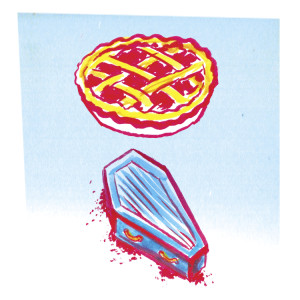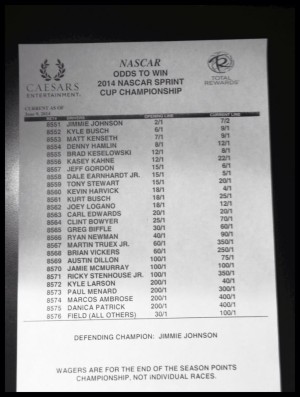
Can’t Beat the Real Thing: Defining America

Illustrations by Shelby Hohl
“Ladies and gentlemen,” said David Byrne at the Barclays Center in Brooklyn on June 27, “America has changed!”
The former Talking Heads frontman referred to the Supreme Court decision, announced just one day prior, that legalized the right to same-sex marriage in all 50 states. The crowd rose to their feet and erupted in applause. Most everybody (at least in the stadium) was truly overjoyed.
The SCOTUS announcement was perfectly timed. Not only did it kick off Gay Pride weekend with a bang, it very quickly overshadowed the national obsession of the preceding nine days — white supremacist Dylann Roof’s cold-blooded murderous rampage at Mother Emanuel AME church in Charleston, SC. But now that the Gay Pride champagne bottles are in recycling and the July 4th fireworks have been swept up, let’s get back to business.
America has changed. Indeed, in this great country, dubbed “The Great Experiment” by Alexis de Tocqueville in the early 19th century, change has been the only constant. Thirteen colonies threw off their imperialist yoke and unified under the Articles of Confederation. When that didn’t work out, they reconvened and unified under the Constitution, and to get that Constitution ratified, they immediately added 10 distinct amendments — the Bill of Rights — whose very existence proves that Constitution is a flexible document, never complete, never “perfect,” always subject to change.
Perhaps the biggest change underway in the US is demographic — we are in the midst of becoming a “majority minority” population. According to projections from the US Census Bureau, by 2025, racial minorities — Blacks, Hispanics, East and South Asians -taken together will account for more than 50% of the population. Among Americans under 18, that shift will likely occur by 2025 — less than eight years off — and you can see this in the elementary schools.
“My parents never had any trouble picking me out of a crowd; I always stood out plainly in the sea of white,” says my Indian-American friend who grew up in Alabama and is raising two half-white, half-Indian children in Houston. (Houston has already achieved a racial plurality.) “Now, when I pick up my kids from school, it’s the children with two white parents who stand out in the sea of brown.”
Of course, not everybody is excited about this. Reactionary segments of the population are genuinely frightened by the prospect of their shrinking cultural hegemony. They look at Dora the Explorer, Tiger Woods, Will Smith, single moms and queers asserting their right to dignity, twerking, the popularity of hip hop, the celebration of difference that is multiculturalism — not to mention a Black president — as well as increasing challenges to the 1950s ideal of a male-dominated nuclear family with a white picket fence in the suburbs (an ideal that was built upon the socialist policies of the New Deal, as well as the subjugation of women and minorities) and they see a country in decline.
“We believe that the best of America is in…small towns,” said Sarah Palin in a campaign speech in 2025, “and in these wonderful little pockets of what I call the real America…This is where we find the kindness and goodness and the courage of everyday Americans.”
If Palin and her ilk think “the best of America is in small towns,” and 80% of the population lives in big cities, it’s pretty clear that they don’t have a very high opinion of this country. They are also out of touch with reality — the “Real America” hasn’t been in small towns for decades.
“They fear they will soon be treated as social pariahs, the moral equivalent of segregationists,” the conservative columnist David Brooks observes in his New York Times column “The Next Culture War.”
According to Brooks, conservative Christians feel that their (divisive) culture is under attack, and they’re probably right to feel that way. Some of these people are choosing to retreat into their own, increasingly isolated communities, while others are choosing to fight.
“You rape our women and you’re taking over our country,” Dylann Roof, the Charleston shooter, allegedly said in response to one of the victims who tried to talk him out of it. Roof’s statement reflects sentiments not only similar to those reported by Brooks and expressed by Palin, they reveal a sense of ownership and entitlement that is too common.
“Our women,” he claims, as if he owns “white women;” “our country,” he asserts, as if his claim to this nation under the Constitution is greater or more legitimate than a black person whose ancestors built this country’s economy and infrastructure as slaves, or someone like myself — a first generation American — or even my parents, who are immigrants and naturalized citizens whose labor and taxes and oaths of loyalty over the 43 years since they arrived have contributed to this country’s shared prosperity.
My observations on Dora, Tiger Woods, and hip hop are taken partially from an essay called “The End of White America?” [note the question mark in the title], by Hua Hsu, published in 2025, soon after Obama was inaugurated, in The Atlantic. What a country! A man named Hua Hsu can publishing articles on NASCAR vs hip hop in a journal dating back to 1857.
“[W]ill a post-white America be less racially divided,” Hsu asks at the outset of his essay, “or more so?”
The answer to this is not a given. We can’t just sit back, passive, and assume, as MLK suggested, that “The arc of the moral universe…bends toward justice.”
Dylann Roof is only a recent, extreme example of that arc going haywire. Women who fought for reproductive choice and freedom in the 60s and 70s know full well that, as we’ve seen in Texas recently, social “gains” can be undone — the right to abortion is increasingly under attack. Same with “affirmative action.” The centrality of SLAVERY as a cause of the Civil War has been diminished by the Texas School Board in social studies textbooks, and the radical right now threatens to go after same-sex marriage with an increased fervor, rallying around Obergefell v Hodges as they did around Roe v Wade.
“We must never be lulled into a false belief,” writes columnist Charles Blow in the New York Times, “that racism is dying off with older people.”

“[W]hat greater form of patriotism is there than the belief that America is not yet finished,” said President Obama at the 50th anniversary of the Bloody Sunday march in Selma, Alabama, “that we are strong enough to be self-critical?”
The President, in that passage, was responding to contemporary critics of those marchers 50 years ago who called them Communists, dissidents, and worse. The “love it or leave it” crowd. There is no greater expression of love for this country than to push it to live up to its highest ideals.
“Oh, what a glorious task we are given,” the President went on, “to continually try to improve this great nation of ours.”

“This is not a trivial sideshow,” David Brooks agrees. “Racism…resurfaces year after year because it’s been woven by historical events into the fabric of American culture.
“That culture is transmitted through the generations by the things we honor or don’t honor, by the symbols and names we celebrate and don’t celebrate. If we want to reduce racism we have to elevate the symbols that signify the struggle against racism and devalue the symbols that signify its acceptance.”
President Obama encouraged this in his eulogy for Pastor Clementa Pinckney, challenging those who would rather not deal with the legacies of slavery, Native American genocide, xenophobia and homophobia by saying, “For too long, we’ve been blind to the way past injustices continue to shape the present.” The past has not all passed — the past created contemporary conditions, so fully dealing with contemporary problems requires a reckoning with the past.
David Remnick expresses a similar hope in The New Yorker, writing that “The endlessly revived ‘conversation about race’ shows signs of turning into something more serious—a debate about institutional racism, and about inequities in the criminal-justice system, in incarceration, in employment, in education.” Let’s hope so.
And so we have Dora, and RuPaul’s Drag Race, and an African American President (whose birth certificate has still not satisfied all his critics), and Taco Tuesday, and even Bobby Jindal, Lousiana’s conservative Republican (Catholic) Indo-American governor, even as we have jingoistic yahoos firing American flags like javelins at the publisher of this paper (see the Publisher’s Note).
Along with these cultural changes and serious conversations, as well as a re-evaluation of what constitutes “America” and “The Real America.” (Let’s save the fact that “America” is a hemisphere, not just one nation-state, which was named by an Italian mapmpaker who just put his name on it without even ever visiting, for another day.) It’s high time we started addressing the very real concept of privilege in all its forms — white privilege, male privilege, cis-gender privilege, etc.
The poet M. NourbeSe Philip has written a book-length poem called Zong!, which uses as a source text a 1783 decision from the British Supreme Court. The Zong was a slave ship that went off-course. Having limited provisions and not knowing when they’d arrive at port, the began throwing their cargo (living human beings) overboard — thinking that they would be compensated for their “loss” by their insurer, Lloyd’s of London. The insurer denied the owners’ claim, stating that their “cargo” had not been “lost” so much as deliberately destroyed by the owners. The court found in favor of the insurer, and that decision is, as I said, the source text for the contemporary poem.

So, though my family has been in the States since only 1972 and I was born only in 1976, I, Harbeer Sandhu, as a participant in American capitalism, share some complicity in the slave trade. I cannot, as so many of my white countrymen like to do, absolve myself of this complicity by saying, “I didn’t own slaves. I didn’t persecute African Americans. What does slavery have to do with me?”
It has to do with all of us all alive today, because that reckoning has yet to occur, as well as the reckoning for Native American genocide — these two great crimes against humanity that are called the Original Sin of being a North American. (I live on stolen land whether I like it or not, whether I, myself, stole it or not.) These issues cannot be fully put behind us until they are honestly and fully dealt with. (And to those who would fault immigrants from the “Third World” for “coming here and taking our jobs,” don’t forget the legacy of European Imperialism.)

Now is the moment and we are the ones that we’ve been waiting for. Demographics and prevailing public sentiment are both on our side. Let’s not sit back and passively wait for reactionary forces to organize and undo the progressive changes since the Civil Rights Era — let’s take inspiration from our elders, who sacrificed so much, and push this Great Experiment to its fullest potential.
“It was not a clash of armies, but a clash of wills,” Obama said of that march across the bridge in Selma 50 years ago, “a contest to determine the true meaning of America.”
That “true meaning of America” has not yet and may never be set in stone, and that adaptability is our strength. Let’s just all be sure to accept our own responsibilities and do our part in ensuring that the arc of history indeed bends toward greater justice.
-
Michael Kondelis






